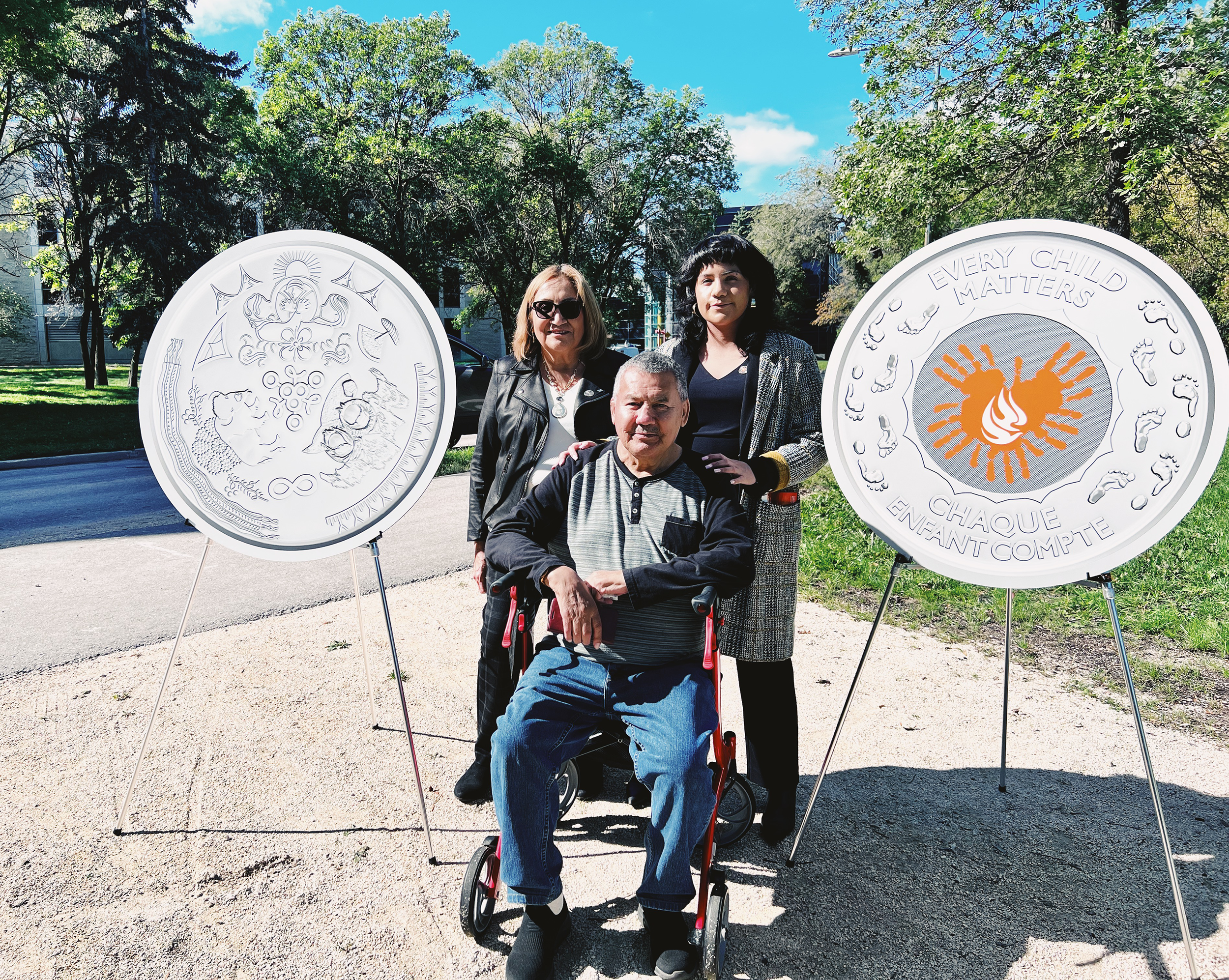CLIENT
Royal Canadian Mint + NCTR
YEAR
2022
TRUTH AND RECONCILIATION KEEPSAKE
Tikanagan
“Tikanagan” is my portion of the Truth and Reconciliation Keepsake that was created in partnership with the Royal Canadian Mint, National Centre for Truth and Reconciliation and in collaboration with Jason Sikaok and JD Hawk. The illustration based is on beadwork. The principles of beadwork put a significant emphasis on symmetry, which reflects First Nations aesthetics. Though glass beads are not traditional to First Nations people, and neither are the florals that make up Ininew beadwork as the Europeans brought both over, I look at beadwork as a testimonial of resilience and resistance. We took those patterns and beads and imbued our own philosophies, perspectives and understanding of the natural world and our culture and made beautiful works of art as a result. Building a tikanagan (cradleboard) is a labour of love, a kinship practice that involves the whole family and, at times, the entire community. The board and bow are crafted by the nôhtâwiy (father), and the covering is by the nikâwiy (Mother) of the baby. Motifs passed down through generations are beaded, embroidered, sewn, and painted onto the tikanagan in preparation for the child to be born. When you create things that another person will wear, you must pray and put love into your work. The tikanagan is built with love and prayers because it provides the baby with protection, security and comfort.

“This design represents familial love as expressed through the tikanagan, a kinship practice involving the whole family and community.”
Indigenous mothers will carry their babies in a tikanagan on their back to bond with their children, keep them close, and allow them to observe and learn about the world surrounding them.
Learning how to build a tikanagan and weaving children into moss bags were meant to teach new mothers and fathers about parenthood. Like many other kinship practices, this was a tradition that colonization had blanketed through the residential school system. The relationships you build within your family and your community at large cultivate your identity as a human being. Residential schools separated children from their families and communities to force them to take on a new identity that reflected European culture and values.
As we work towards decolonization, this is a practice that is being reclaimed and celebrated once again.
I wanted to create an image that would evoke a sense of family and culture, so I started with a baby inside a tikanagan. The kikâwiy (Mother) and kôhkom (grandmother) surround the child. This symbolizes connection and family support across generations. These figures sit around a fireweed flower, symbolizing regrowth. This flower grows all across Canada, and is shared by all communities. I chose to showcase florals because I am Ininew (Cree), and I grew up around beaded floral designs throughout my entire life.
The natural element of the sun and traditional teepee lodgings on the Keepsake signify a connection to the land. The tikanagan is also supported by symbols of water—reinforcing the connection to nature and the many waterways across the land. To the left of the tikanagan is a triangular motif inspired by parfleche designs. A parfleche was a carrying bag made out of rawhide that was cleaned, stretched, and dried in the sun to make durable leather. Skilled craftswomen within the tribe would then paint these bags with geometric.
I wanted to convey the idea of ancestral knowledge passed down through kinship practices, land-based learning and beginning the process of healing through these teachings. We can recognize and grieve our family members' pain by acknowledging that trauma and working through it.
This project in particular was a very unique and special one for me as this was an opportunity to work and collaborate with other Indigenous artists. I had the pleasure of working Jason Sikoak (Inuit) and JD Hawk (Métis) to create a concept that would combine all three of our unique perspectives, cultures and styles. The openness represents how the environment is shared, and provides a shared experience. The outer edge of the Keepsake features a Métis sash, Inuk tattoo linework, and a geometric quillwork pattern representing the First Nations. These three motifs roughly define areas within the circle, however, they are intentionally spaced apart to symbolise the vast and open land that they share.


